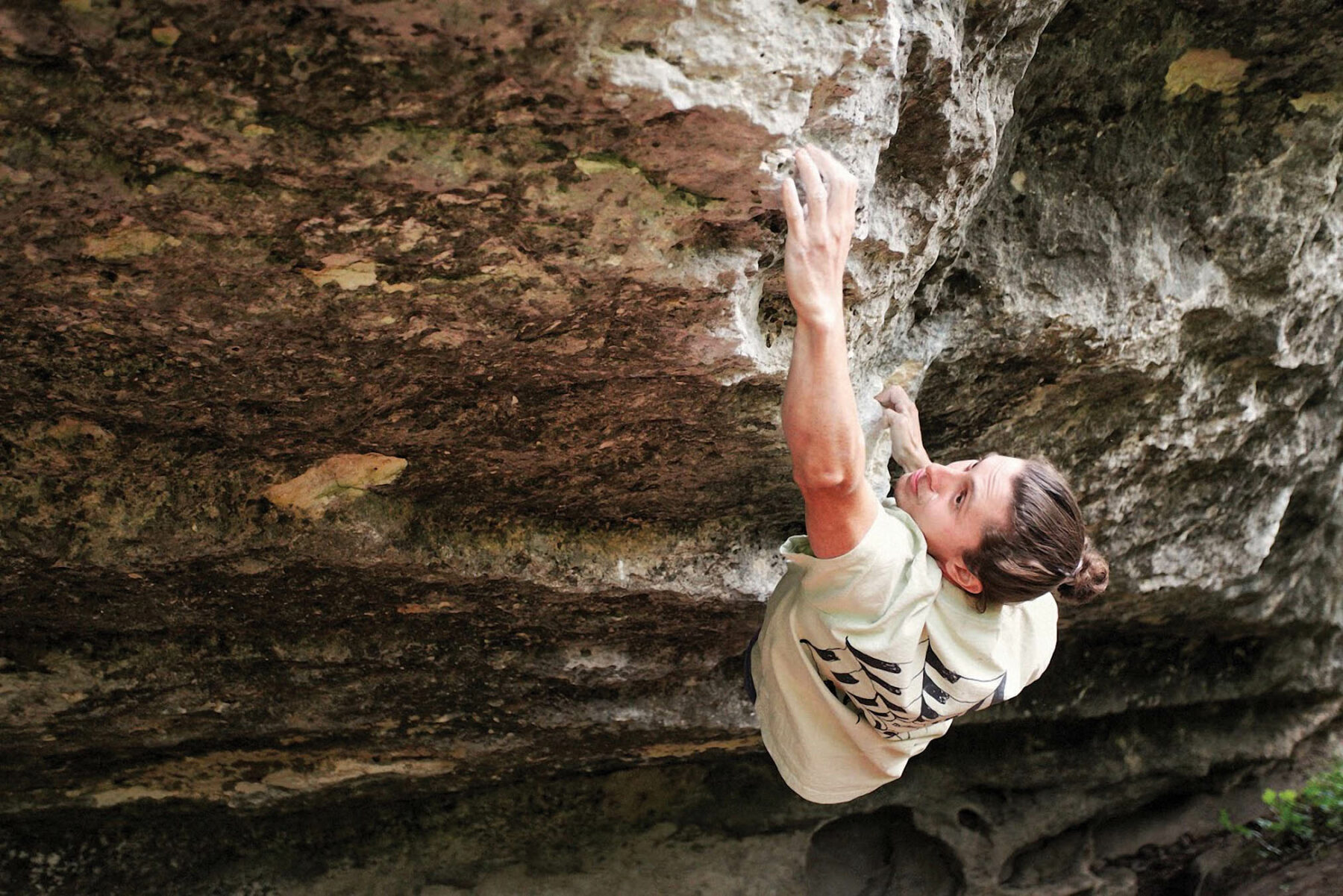The Levels of Rock Climbing

A lot of people know instinctively how to climb, but learning how to succeed at rock climbing is a skill on its own.
Your style of climbing is going to change as you improve — your body becomes more relaxed as you grow in confidence, you become more dynamic in moves and your confidence grows as you trust in your ability to jump and climb in a safe manner. But how do you know when to try out higher-level moves and when to keep improving on the ones you already know?
Austin-based Riley Woods has been climbing for six years. He worked as a climbing instructor at a kids’ camp in Colorado, traveled across the country in search of new climbs and has tried almost all climbing disciplines with a soft spot for bouldering.
Woods says although there’s no classification to determine which moves are beginner, intermediate and advanced, climbing still requires basic knowledge and training. Plus, some moves are more challenging than others, such as jumping for holds, and require a strong foundation of climbing skills.
“It is a skill sport,” Woods says. “Just because you’re the strongest in the room doesn’t mean you’re going to get up quickly.”
Beginner
A big part of learning to climb well begins with understanding how you climb.
“(Climbing is) all about moving your body,” Woods says. “It’s about learning how to grab different holes and crevices.”
Beginner climbers have the tendency to focus on reaching the top of the wall, but neglect paying attention to how they’re using their limbs. To be an efficient climber, Woods says you must learn to engage your muscles and grab holds and crevices in different ways.
Some basic methods of grabbing holds include an undercling as well as a full or half crimp. An undercling is when you put your palm up to grab a hold — these are most effective around your midsection to allow the least amount of stress on your hands. If you put too much weight for too long on your hands, they can cramp and you could lose your grip.
With full or half crimps, the difference in these holds is where your thumb goes. In both holds, your four fingers press into a hold, arching upward while putting pressure on your fingertips. However, for a full crimp, your thumb is on top of your pointer finger, adding another level of pressure. For a half crimp, your thumb stays on the side. Be careful, though, because if you hold a full crimp for too long, it can lead to chronic finger injuries.

Intermediate
As you start becoming more relaxed and dynamic in your climbing, you can increase the speed of your climb. While beginner climbers ensure they’re touching the wall at all times, intermediate climbing becomes more fluid and calculated.
Dyno moves are one such move where you jump from hold to hold with your right hand reaching for a new hold. A double-dyno is completely abandoning the previous hold for a new hold.
“Jumping for holds is definitely intermediate,” Woods says. “There’s a lot of inner dialogue that goes into a jump.”
Advanced
Advanced climbing often includes using holes that are only big enough to fit two fingers, typically being more of a pocket or indentation. These holds are common in outdoor climbing. Sometimes, you might see monos, which are one-finger pockets. These can be very easy to hurt yourself on.
“Climbing is very strenuous,” Woods says. “The tendons in your hand are not as strong, but over time, they get stronger.”
Another advanced move includes the kneebar, which includes jamming your knee or thigh into a hole and using the pressure on it to reach your arms to the next hold.
“(A kneebar) can be a scary thing because you also have to know how to fall properly,” Woods says.
If you can’t make the reach, falling properly becomes the most important thing to focus on. When you fall, the key is to not panic. Keep facing the wall as you fall, and as you land, land on your feet, and roll onto your butt and back to avoid twisting your ankles.
–
With anything, it takes time and practice to become an expert, and that’s true for rock climbing, too. Focusing on one method helps you master one specific way of climbing, but being open-minded to different disciplines opens the door to more climbing opportunities.
“You have to do everything really well to become an expert,” Woods says. “A good way to improve is to watch people who are better than you and emulate them.”






